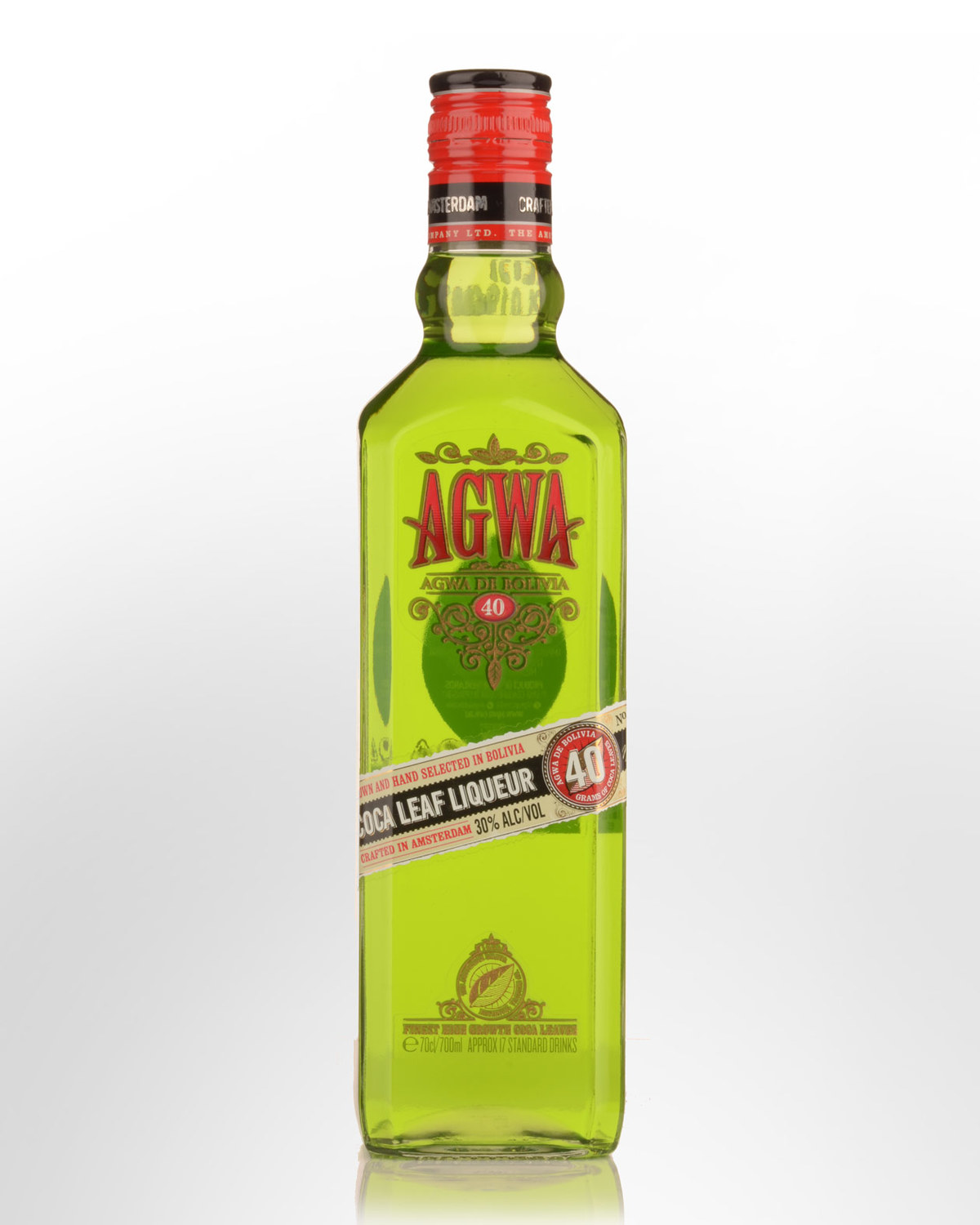
Agwa Liqueur (700ml)
In 1820 the first Bolivian coca leaf liqueur was manufactured by the De Medici in Bologna, Italy and sold throughout Europe. Rudyard Kipling said the powerful elixir as being made "from the clippings and shavings of angels wings". The product was removed from the market with the banning of cocaine as rudimentary distilling did not remove cocaine. Today bales of Bolivian Coca leaf are shipped under armed guard to Amsterdam where they are distilled and an exact maceration and herbal extraction technique guarantee the removal of the cocaine to standards acceptable to European and US authorities. An extremely distinctive peppery herbal base is then blended with other herbs like guarana & ginseng to balance the taste and augment the effect.
For over 4000 years among the native Andean population the coca leaf has been used for ancient rituals and for everyday gift giving. Today it is drunk as a tea and chewed for hours by farmers and miners. The result is similar to a prolonged caffeine or tobacco buzz. But it's more than that. It improves stamina, is a sacred symbol central to community life and provides essential nutrients. 100 grams of coca would more than satisfy the daily-recommended allowance of calcium, iron, phosphorous, vitamin A and riboflavin. The World Health Organisation and the UN's Inter Regional Crime and Justice research institutes cocaine project maintains that coca users show none of the classic signs of addiction. In fact coca is not a major component of cocaine as only 0.5% of the alkaloid cocaine is found in coca and 41 chemicals are needed to extract cocaine from the coca leaf.
Guarana is the extract from the seeds of the common Amazonian climber Paullina Cupana. The South American Guarani Indians make a paste from the crushed seeds, cassava flour and water. The paste is rolled into cylinders and dried. The residue is then grated and the shavings are dissolved in hot sweet water. Typically the resultant brew contains about 5% caffeine; British tea contains 0.03% and coffee up to 0.08%. Caffeine is an alkaloid. An alkaloid is defined as any of various nitrogen containing organic bases obtained from plants. Caffeine is one of three types of alkaloids, the others being thophyliine and theobromine. Caffeine has a stimulating effect on the central nervous system, heart, blood vessels and kidneys. The positive effects that have been described in people who use caffeine include motor performance, decreased fatigue, enhanced sensory activity and increased alertness. However, caffeine intake may also produce such negative effects as irritability, nervousness or anxiety, headaches and insomnia. Caffeine acts rapidly. About100mg of caffeine starts to affect you in about 10 minutes, reaches its peak in an hour and lingers in your system for at least 3 hours.
True Ginseng is the source of a stimulant and supposed aphrodisiac that is extracted from the roots. It is native to China although closely related species, American Ginseng, occurs in Eastern North America and is sometimes substituted for the Chinese variety. Ginseng has a sweetly aromatic flavour. The basis of Ginseng's action is believed to be due to certain chemical agents in it that increase the brains adrenocorticotropic hormone (ACTH) activity without involving the adrenal glands. A generalised mental arousal is thereby effected.
Leading authorities for Mayan and Inca studies have challenged Agwa's claim to be the world's first "Psycho-Active" spirit drink. Neither the claims nor the effect are disputed but a leading Mayan Foundation contends that, "Herbal based beverages were at the centre of practices by Mayan elders. Among their people these elders were great men and visionaries. The visions gave direction to the tribe and were the result of taking a spirit fermented from herbs and then flavoured with honey." This may indeed be a precursor to Agwa, however, the Mayan elders didn't actually drink the spirit. They filled a funnel shaped gourd with the liquid and inserted it where the sun doesn't shine. This is not among the recommended ways to use Agwa...
- Notes sourced from www.agwabuzz.com
Tasting Note: Translucent emerald green color. Men's cologne-like aromas of herbs and sweet fruits in the nose. A thick, supple entry leads to sweet medium-to full-bodied palate with candied lime and green tea elements meshed with ginger and light herbal notes. Finishes with a sweet, citrus fruit glide and a noticeable, caffeine-like "head rush" a moment later. 30% Alc./Vol.International Review of Spirits Award: Silver Medal
88 points (Highly Recommended) -www.tastings.com
Serving Suggestions for Agwa
Agwa can be enjoyed in a huge number of combinations, or simply on ice by itself. Try experimenting with these:
Cocarana - A measure of AGWA and bottle of coke mixed over Ice with a lemon slice.
Cocarita - Supercharge a margherita with Agwa instead of triple sec / cointreau.
Lightning - AGWA and Tonic.
Mick Martian Martini - AGWA, Milk and dash of Malibu shaken & served as a martini.
Piranha - Bitter Lemon & Agwa & slice of lemon.
to most of Australia
